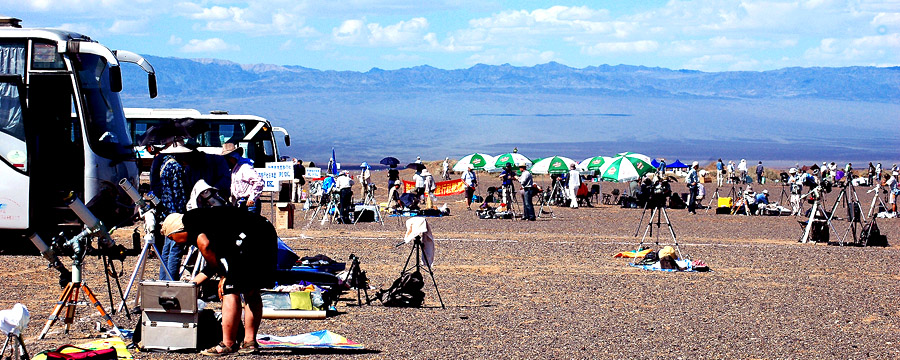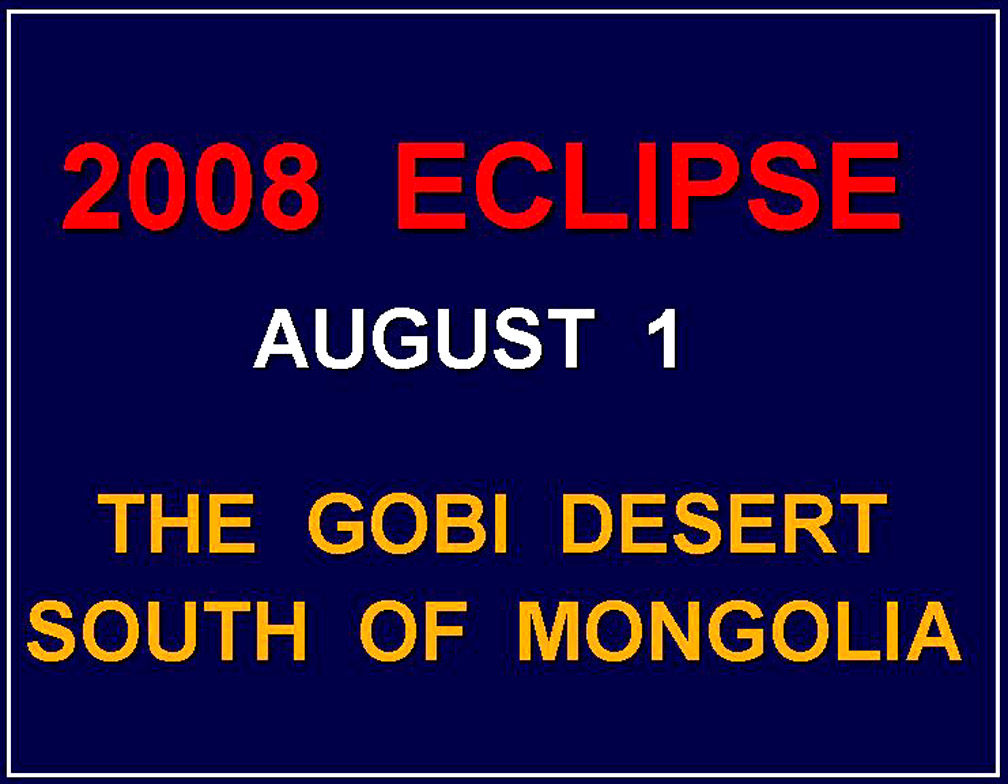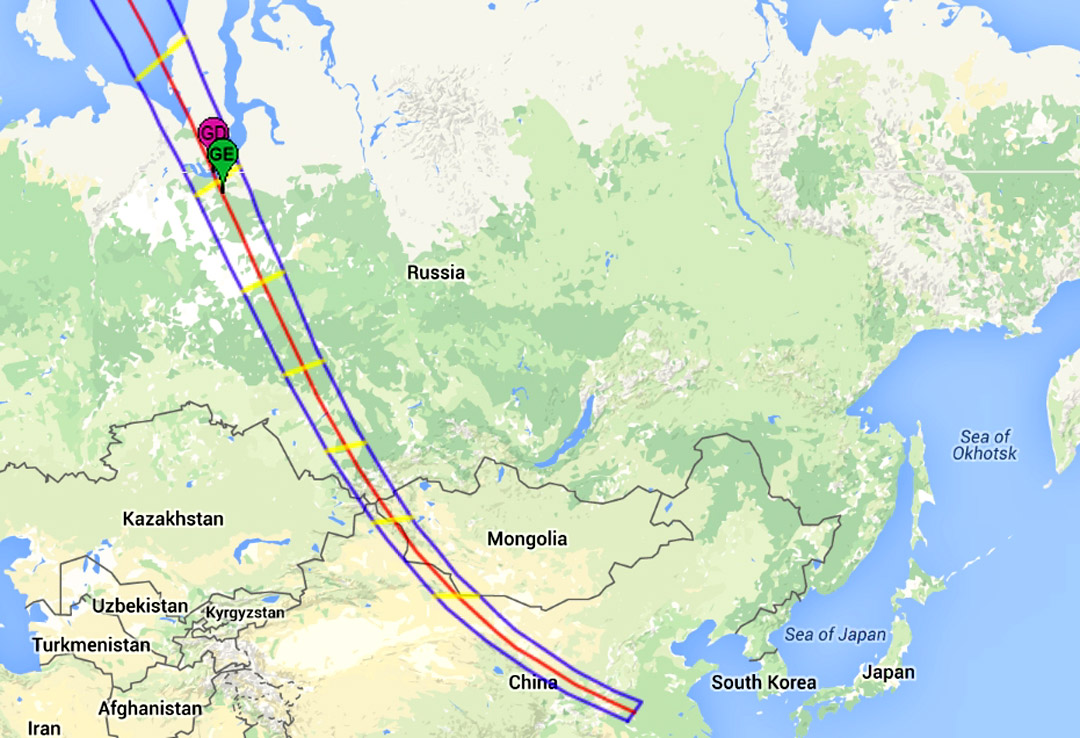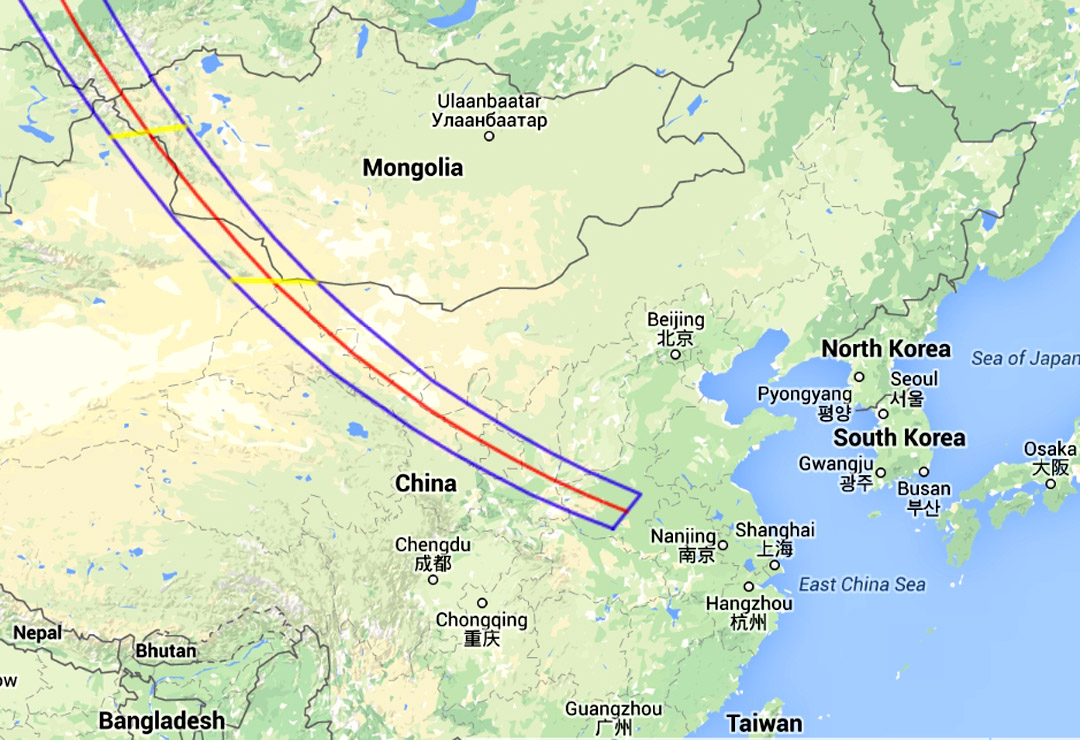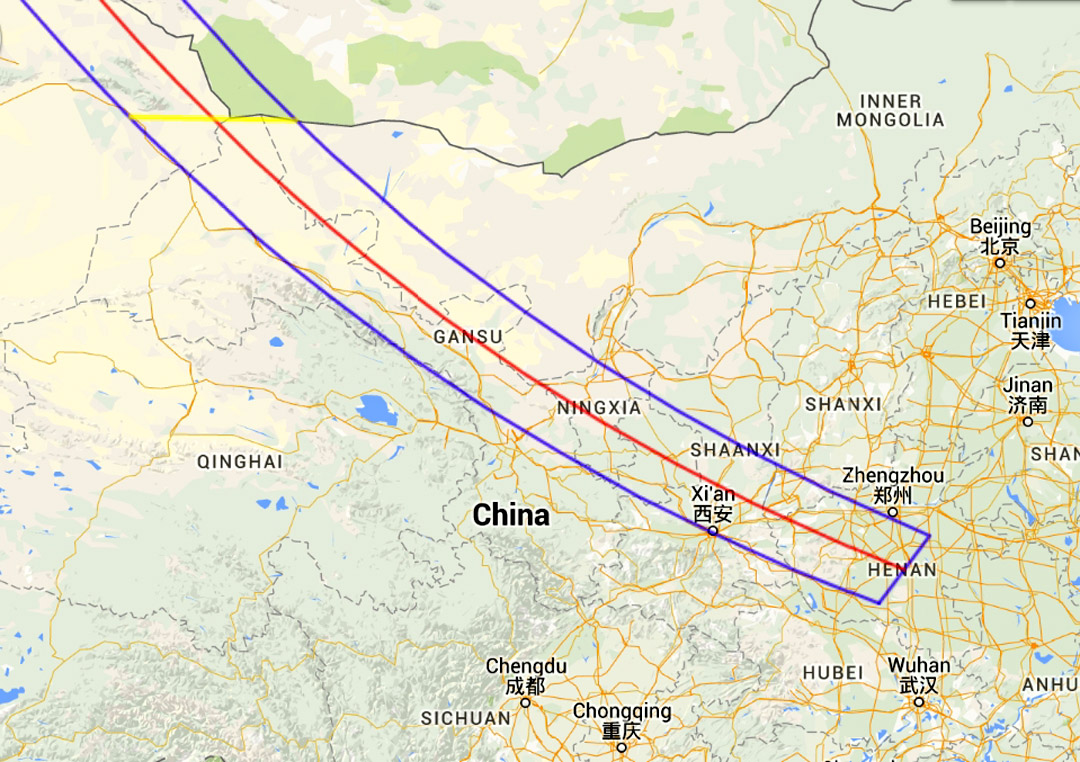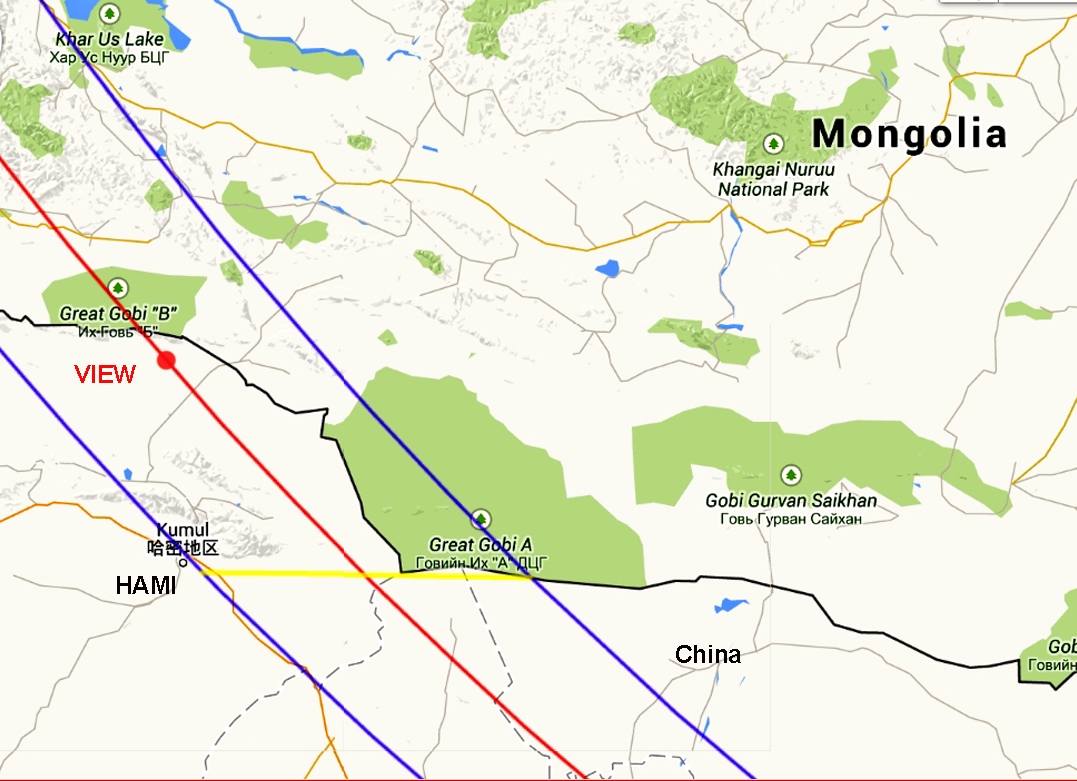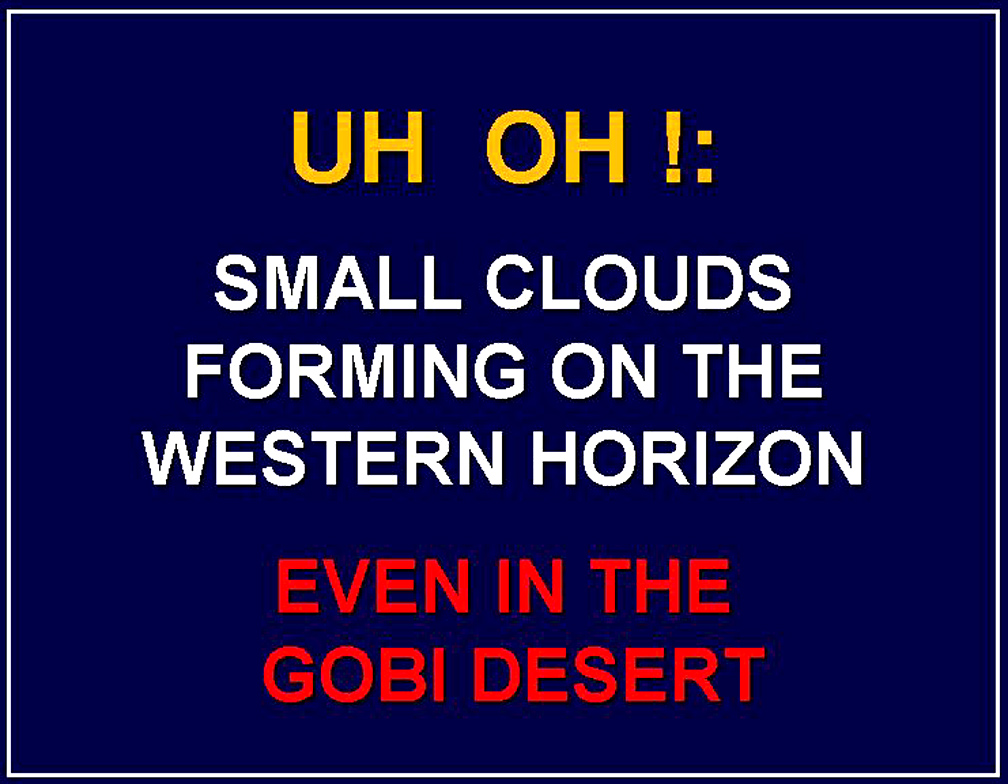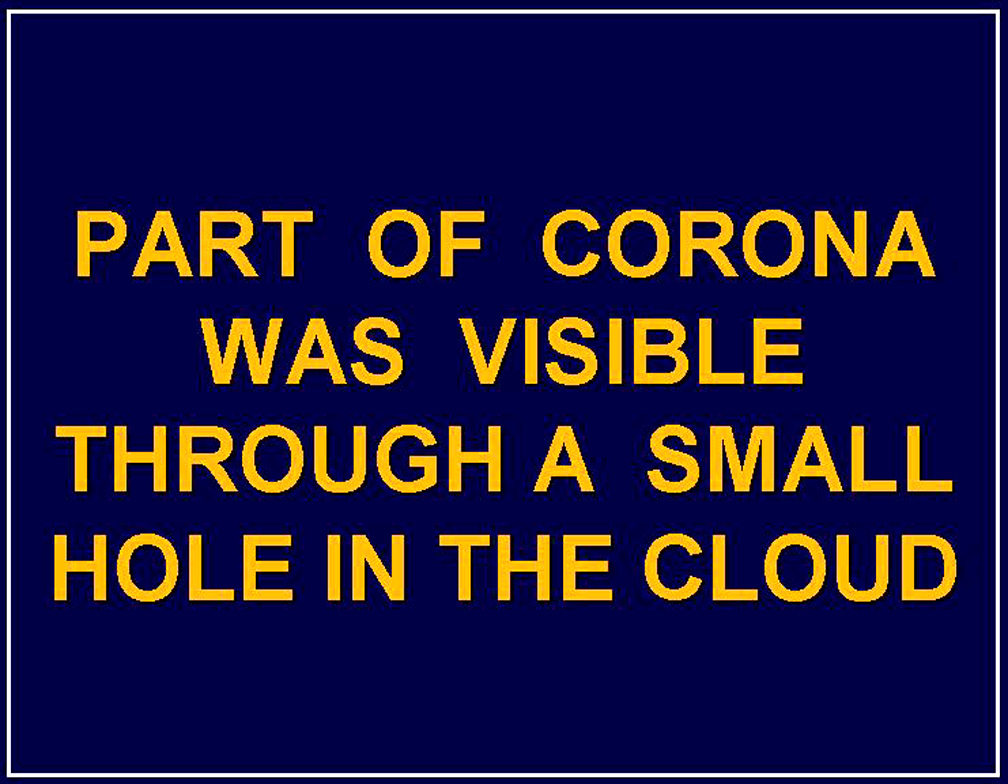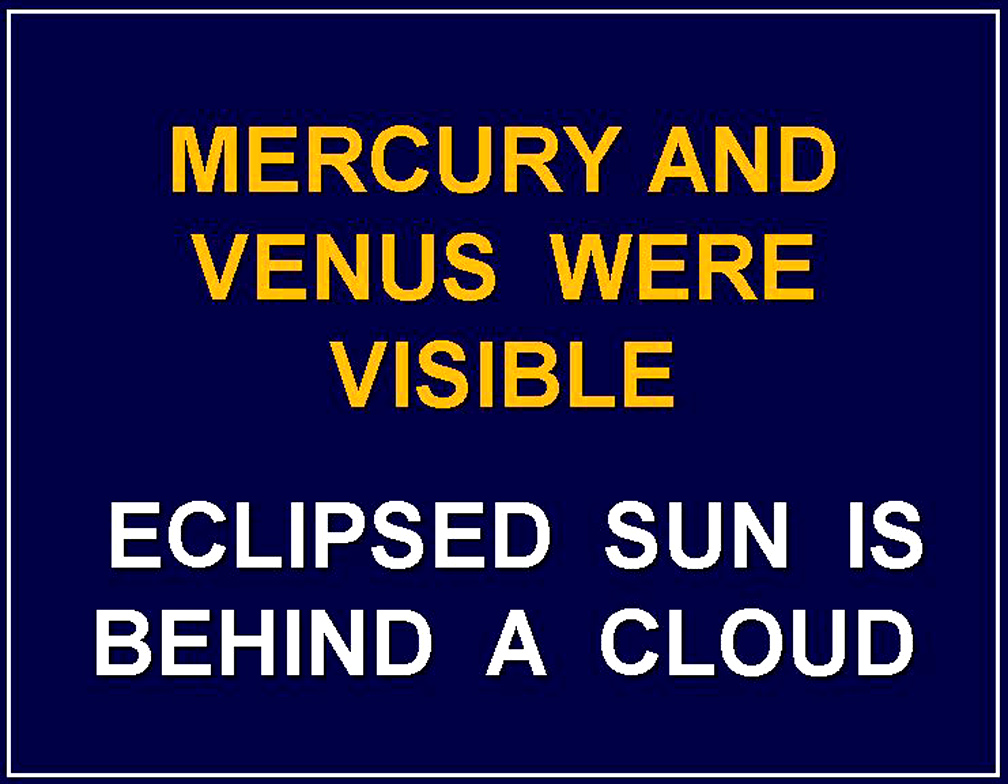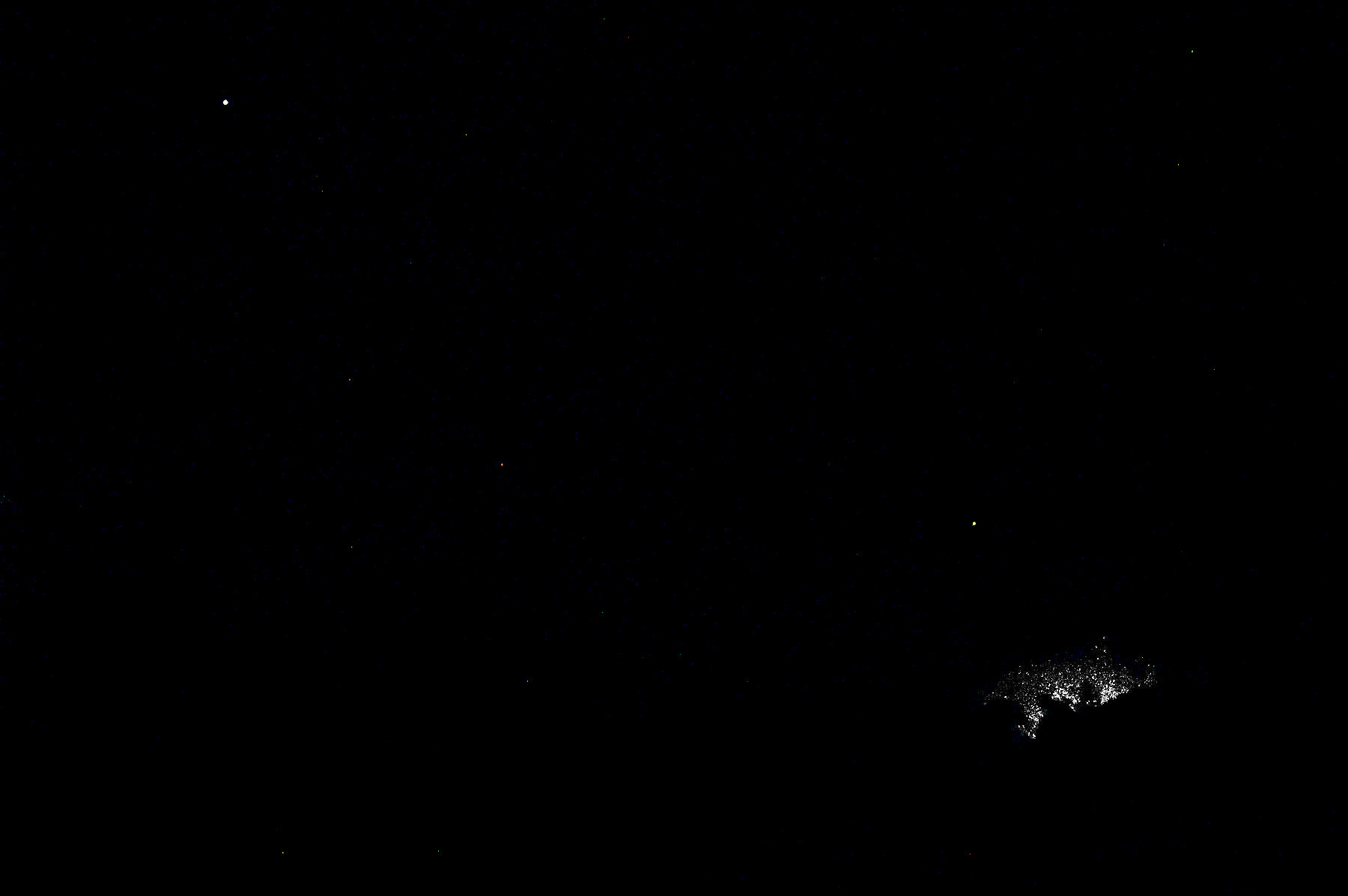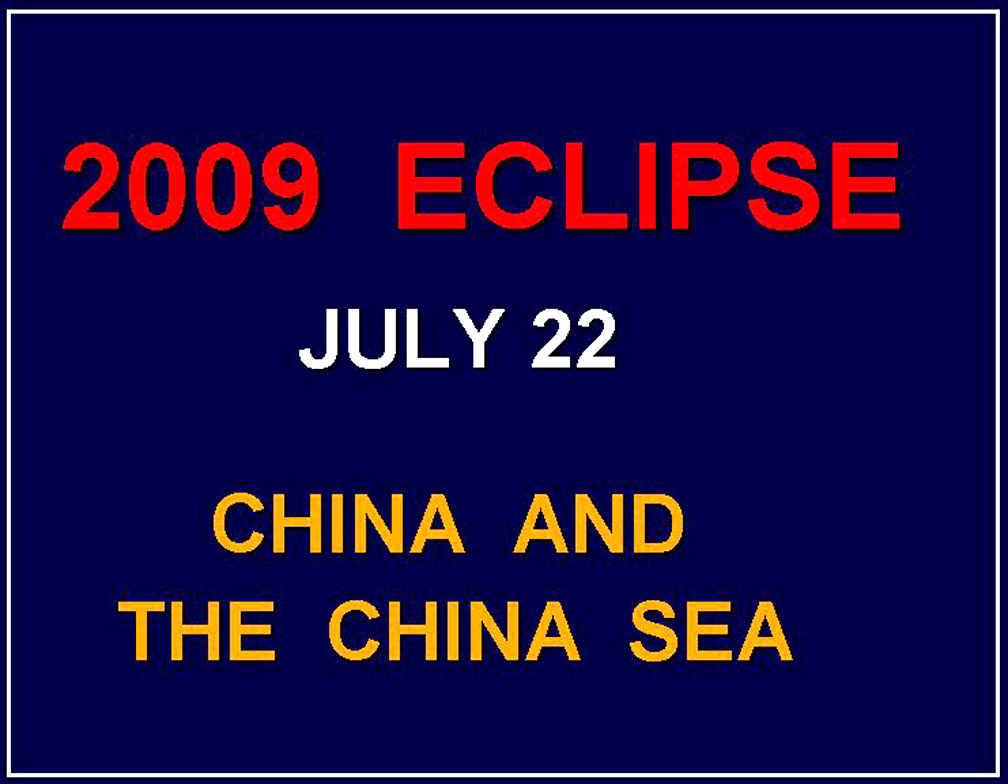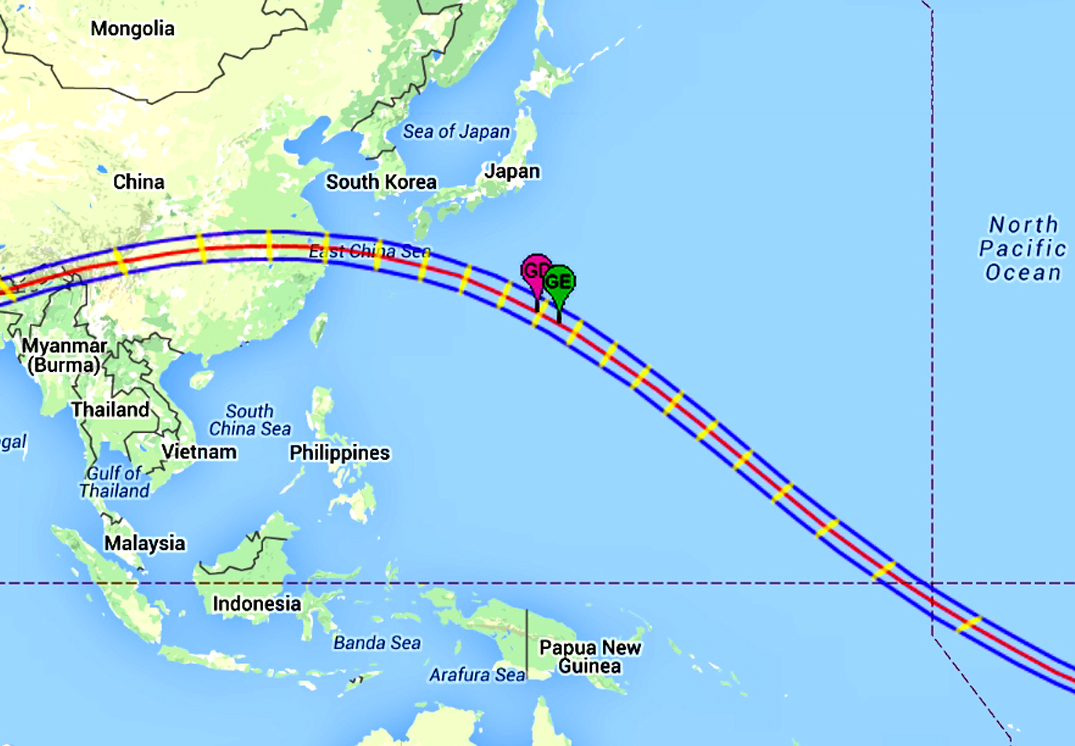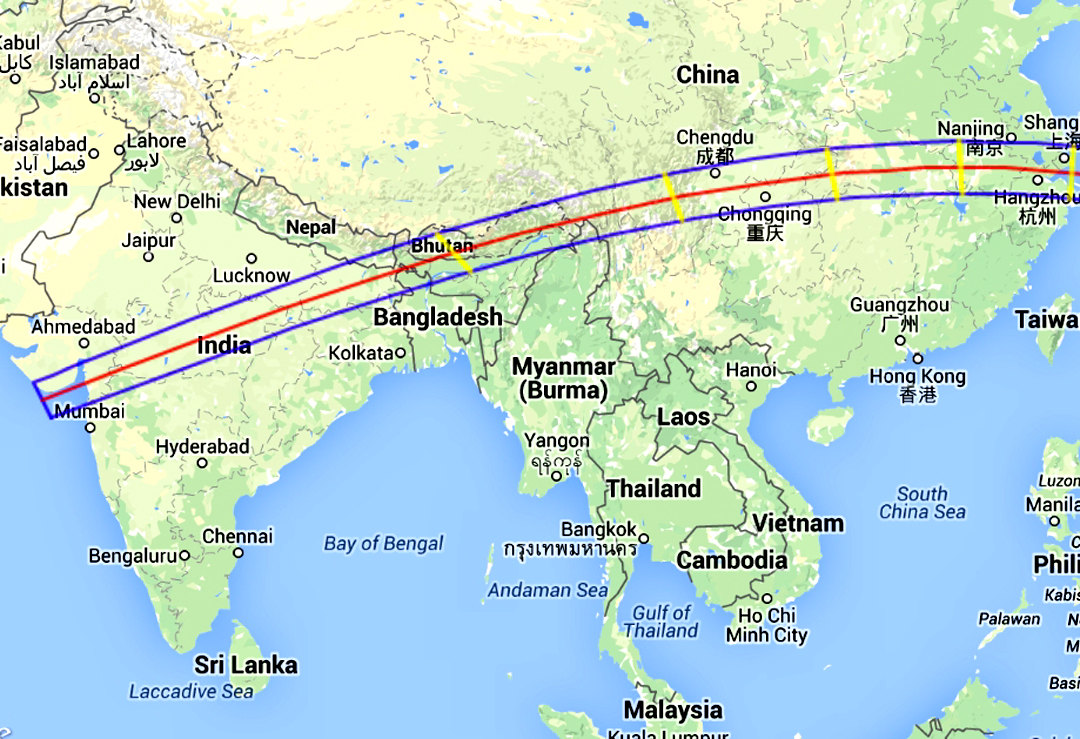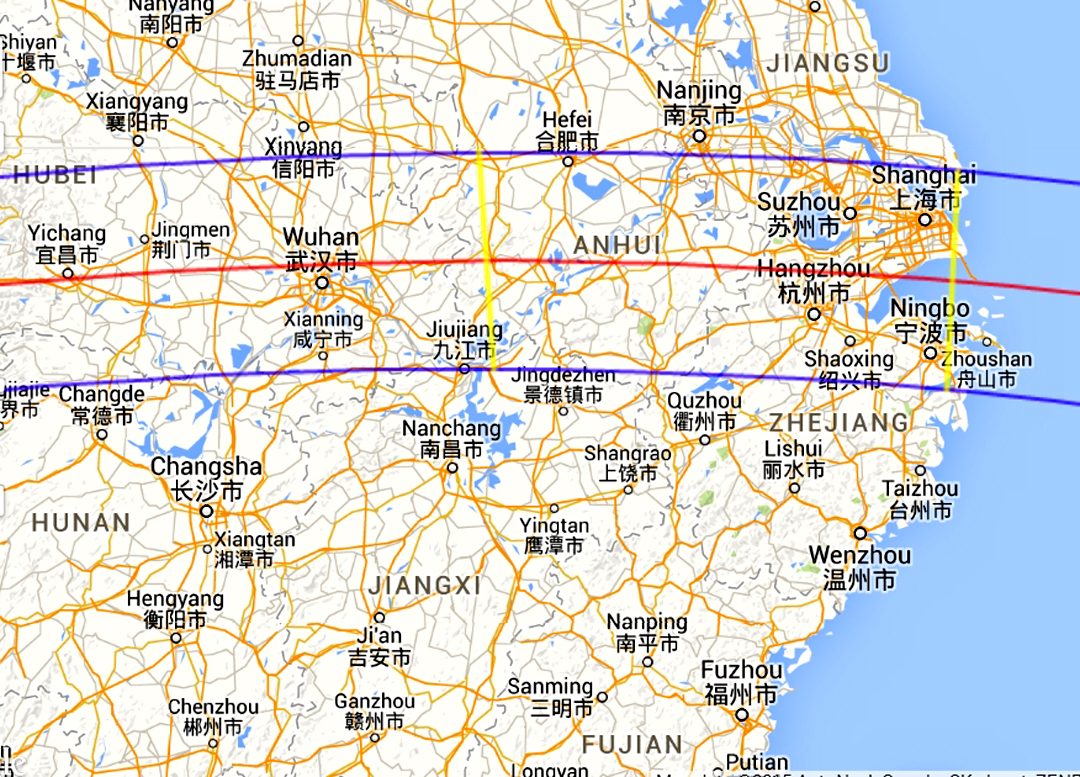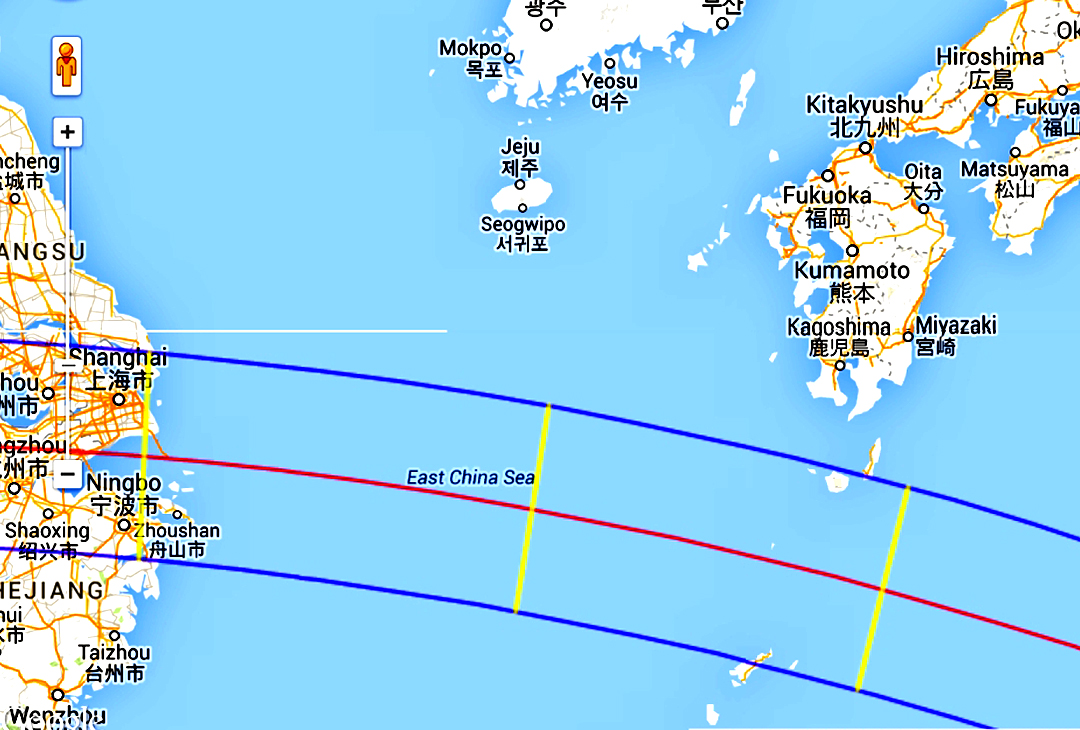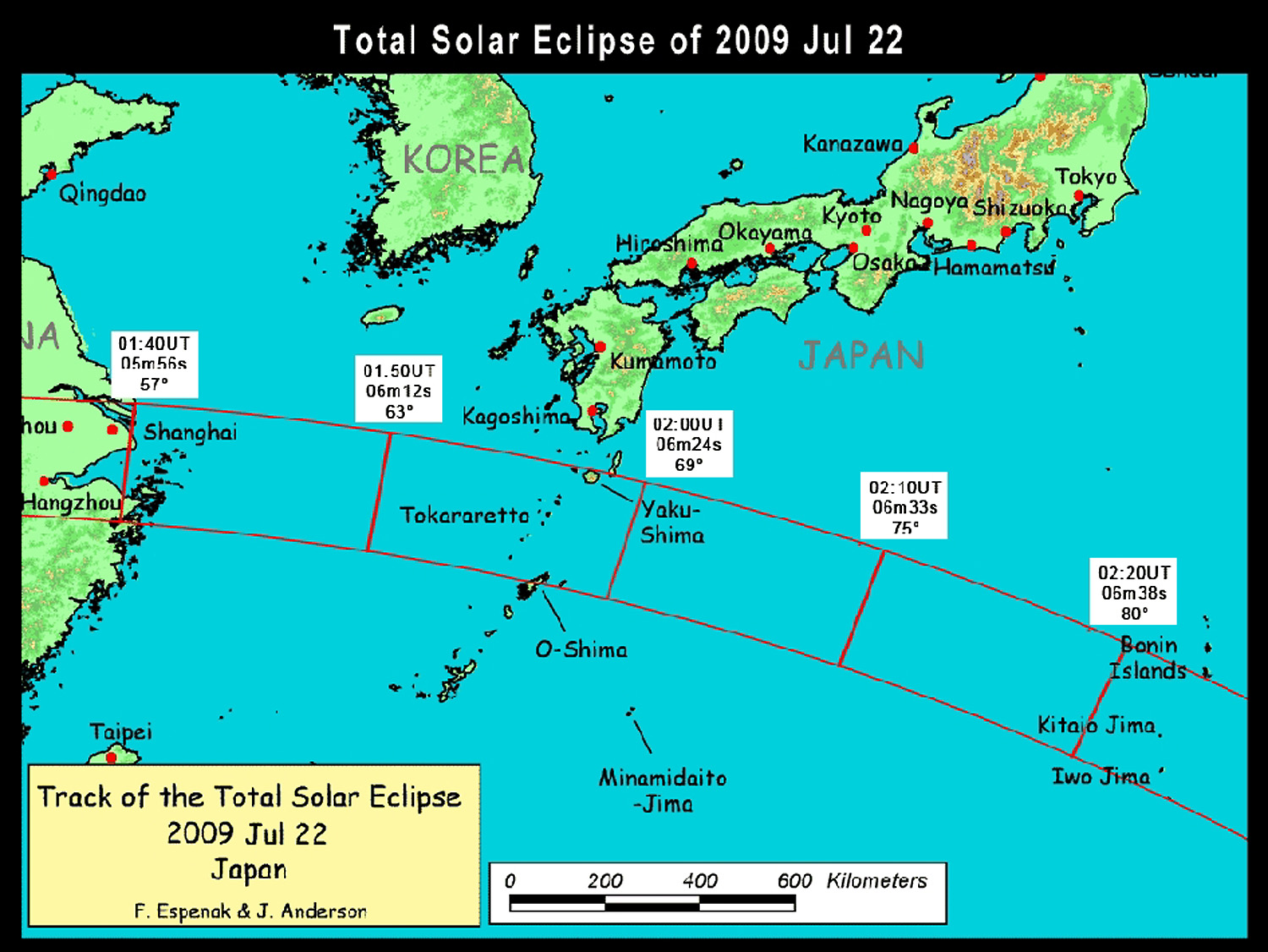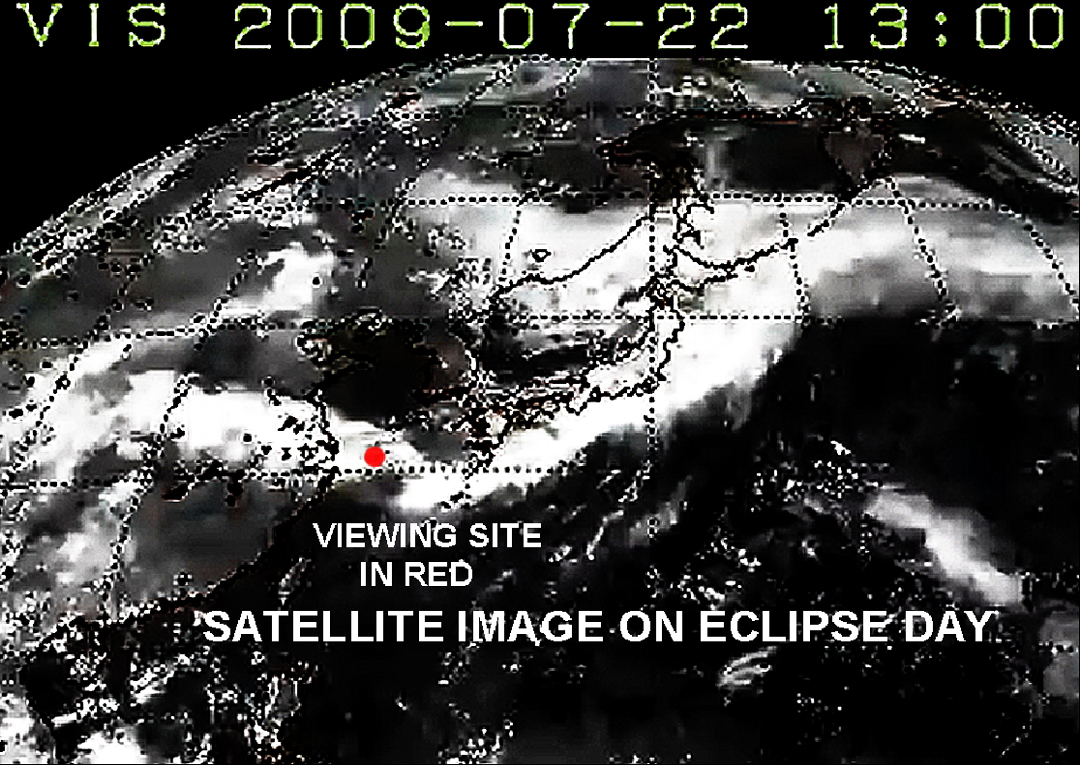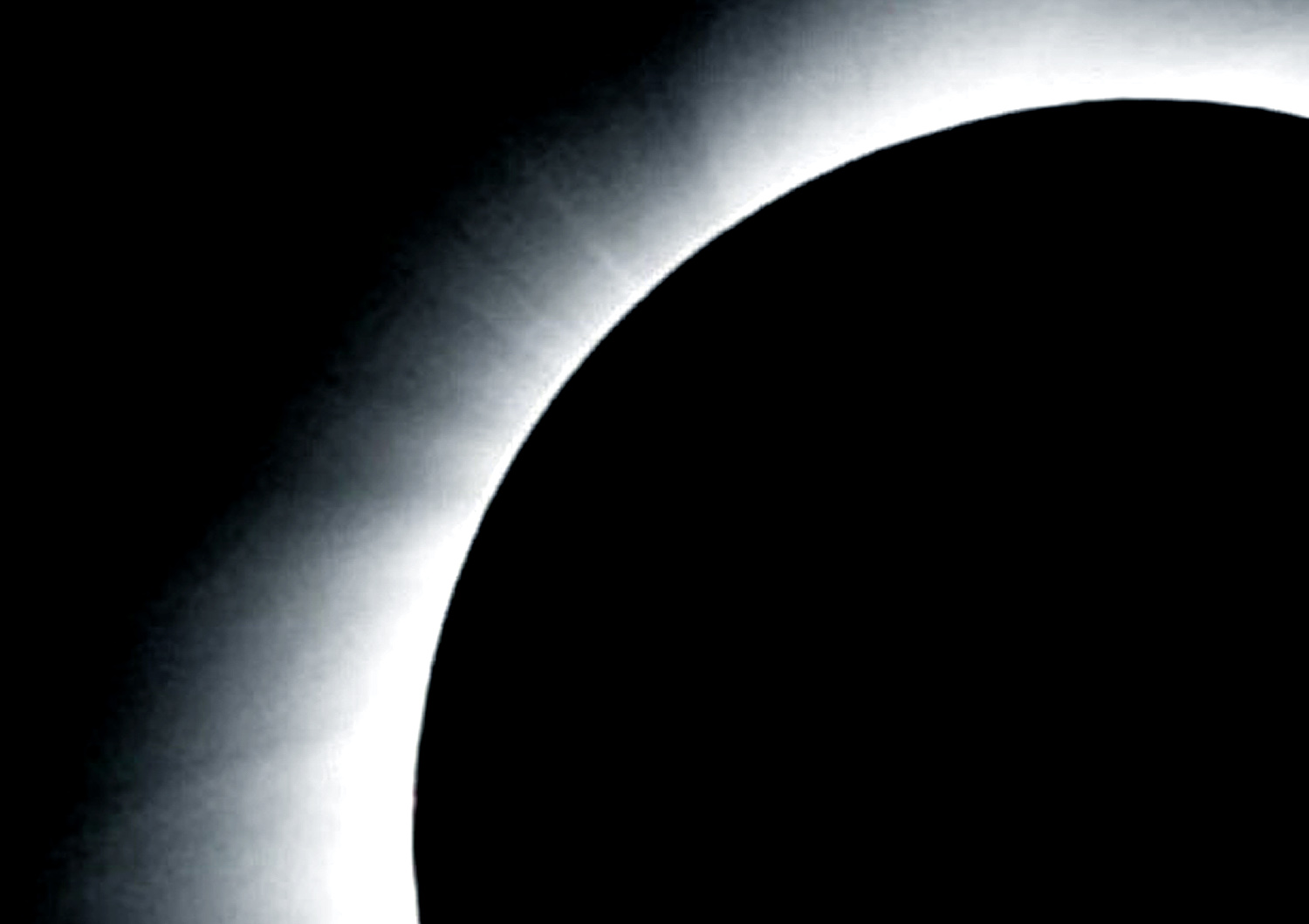The 2008 total solar eclipse in China occurred on August 1, 2008, and the path of totality passed through the Gobi desert in the far northwest Xinjiang Autonomous Region. This was near the intersection of China, Mongolia and Russia, which is certainly not easy to get to. The Site Moderator and his group of 5 couples who chase such eclipses went first to Tibet to travel to Mt. Everest, then took the new Himalaya train (the world’s highest train at 5079 meters) northward to Golmud in the 1500 km journey north toward Hami, near the Mongolian border. The eclipse was observed in the late afternoon in extreme heat (114 degrees F), if you can imagine being in the Gobi desert on the afternoon of the first of August! Chinese troops guarded the eclipse viewing site, and no one was allowed to drive to clearer skies as small clouds formed. Only partial success was achieved from this location northwest of Santanghu, about 30 miles from the Mongolian border. A small cloud (see photo above for the small, low clouds that were present) obscured the first diamond ring, as well as the corona for most of the short, two-minute totality, but some of the corona was observed through a hole in the cloud, and the planets and bright stars were seen, as was the second diamond ring. It was a very interesting experience to say the least!
Just a year later the group of five couples was back to chase another China total eclipse. The July 22, 2009 eclipse over southern China and the China Sea was the latest in eclipses of Saros Series #136. The eclipses in this Saros series (and in every Saros series) occur every 18 years and 10 days, but this Saros series has eclipses with a duration of totality that is exceptionally long; in the 6 to 7 minute range. Previous such eclipses occurred in 1919, 1937, 1955, 1973, 1991 and finally 2009. The Site Moderator was at the three latest eclipses in this Saros series. The path of totality passed over Shanghai, and it was expected that as many as 17 million Chinese would experience their first total eclipse of the sun. However, a huge wearher front enveloped both southern China and the China Sea with clouds and rain. It did get dark for six minutes, but the residents of Shanghai saw nothing. The Site Moderator and his group of five couples who regularly chase all accessible eclipses also saw nothing but pouring rain in the China Sea. This was a big disappointment, as the same group was also clouded out of the previous 7-minute eclipse 18 years earlier in Hawaii (1991). Those who on-board ships that observed much further east, near the island of Iwo Jima, saw a beautiful, very long total eclipse in clear skies.Some of these great photos taken by a longtime friend of the Site Moderator, Ken Wilson, are in the slideshow.
It should be obvious to you in reading the introductory remarks to each eclipse slideshow that the most important uncontrolled parameter in chasing eclipses is the weather. A greater degree of importance than you might expect must be assigned to this consideration. Statistical data on cloud cover needs to be examined for each proposed viewing location many months in advance. Once a primary viewing site is selected, contingency plans needs to be developed for the very real possibility that clouds could form on the evening before, or the morning of, the eclipse. You should have a second location along the path of totality already identified, along with the means to get there. Upon arriving at your primary viewing site, the weather predictions for the 3 or 4 days prior to the eclipse needs to be monitored closely. Build as much mobility into your travel plans as you can!
Gallery Slideshow Photos for the 2008 and 2009 Eclipses of the Sun:
*** NOTE: Click on “Show as Slideshow” to Display these Photos of the 2008 and 2009 eclipses as a Slideshow at the Bottom of the Page. When the Slideshow Begins, place the Curser at the Bottom Center of the Photo to View the Slideshow Navigation Bar. The Title of each Slide is in the Center of the Navigation Bar. To Pause the Slideshow on a Photo, click on the Slide Number. To Mute and Unmute the Music, click on the Speaker Icon that is Second from the Right. To Display the Slideshow in the Full Screen Mode or in a Smaller Window, click on the Display Icon at the Far Right End of the Navigation Bar. To end the Slideshow click on “Show Picture List”.***
